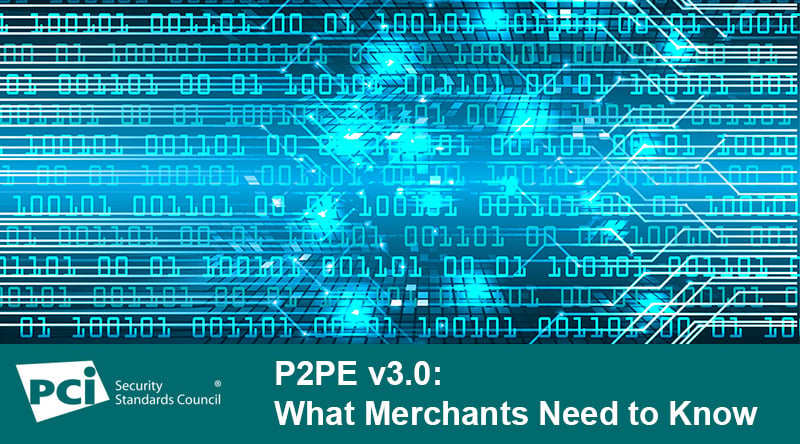The updates to the P2PE Standard and supporting program is part of the Council’s mission to evolve security standards and validation programs to support a range of environments, technologies and methodologies for achieving security. Ultimately, the updated PCI Point-to-Point Encryption (P2PE) ® Standard and supporting program will result in more PCI P2PE ® Solutions available to the marketplace. Here we cover key questions on what merchants need to know about P2PE v3.0.
What is P2PE and how does it help merchants protect payment card data?
A point-to-point encryption (P2PE) solution cryptographically protects account data from the point where a merchant accepts the payment card to the secure point of decryption. By using P2PE, account data (cardholder data and sensitive authentication data) is unreadable until it reaches a secure decryption environment, which makes it less valuable if the data is stolen in a breach. A PCI P2PE solution can significantly help to reduce the PCI Data Security Standard (PCI DSS) validation effort of a merchant’s cardholder data environment. However, it does not completely remove the need for PCI DSS validation in the merchant environment.
What are the changes to the P2PE Standard and Program?
PCI P2PE v3.0 maintains the same approach to security as v2.0. The feedback garnered from the Council's request for comments (RFC) process helped improve the P2PE Standard in terms of adding clarity, providing additional guidance, making errata changes, resolving ambiguity, as well as restructuring the Standard to eliminate redundancy and improve its overall readability. In addition, there are beneficial program changes. These changes will ultimately result in more P2PE solutions available to the marketplace for merchant use.
In 2015, the PCI SSC first introduced the ability to validate P2PE solution components, which are services that fulfill specific P2PE requirements. Version 3.0 of the Standard maintains the same approach to protecting payment data but doubles the amount of component providers which can validate against the Standard. The listing of individual components makes it easier for a solution provider to be aware of and select validated components for integration into their P2PE solution. This will allow for more outsourcing for the solution and component providers, which will facilitate more available PCI P2PE Solutions for merchants.
Also on the blog: 3 Things to Know About P2PE v3.0
How do these changes impact merchants?
PCI PP2PE Solutions help merchants by encrypting cardholder data at the earliest point of acceptance, making that data less valuable to attackers even if compromised in a breach. Use of a PCI P2PE Solution can also allow merchants to reduce where and how the PCI DSS applies within their retail environment, increasing security of customer data while simplifying compliance with the PCI DSS.
It’s important to note that the P2PE technology that protects their payment data isn’t changing- the changes are aimed to provide more solutions for merchants. Therefore, merchants considering a P2PE solution should not wait for a P2PE v3.0 validated solution. Solutions validated against v2.0 of the Standard will provide the same level of security. Merchants should talk with their acquirer about selecting and using a PCI P2PE v2.0 solution.
What are the changes to the PIM in P2PE v3.0 and how do those changes affect merchants?
PCI SSC provides a template that P2PE Solution Providers must use when producing the PIM, or P2PE Instruction Manual for their solution. The PIM provides useful information from a solution provider for their merchant customers to effectively and securely manage their encryption environments and the POI devices within their purview: e.g., the secure installation of POI devices, monitoring POI devices for signs of tampering, and appropriate incident response procedures for security incidents. For v3.0, the PIM template has been reorganized in a more logical manner as well as being updated with improved clarity and guidance, especially in terms of POI device tamper and modification. This will help the solution provider populate the appropriate information for merchants in their PIM, serving as a useful tool that complements the P2PE solution implementation.
Why should a merchant consider implementing a PCI P2PE solution?
There are certain critical payment security aspects that PCI P2PE Solutions will check for. PCI P2PE Solutions have been validated to demonstrate that all the critical security components are being addressed so that an assessor reviewing a merchant’s card data environment has confidence those security controls are in place, which helps minimize the review process. Non-validated solutions require the assessor to do their due diligence to assess that the solution is providing the same level of security that a PCI P2PE Solution would.
Also on the blog: P2PE v3.0: What Vendors and Assessors Need to Know


